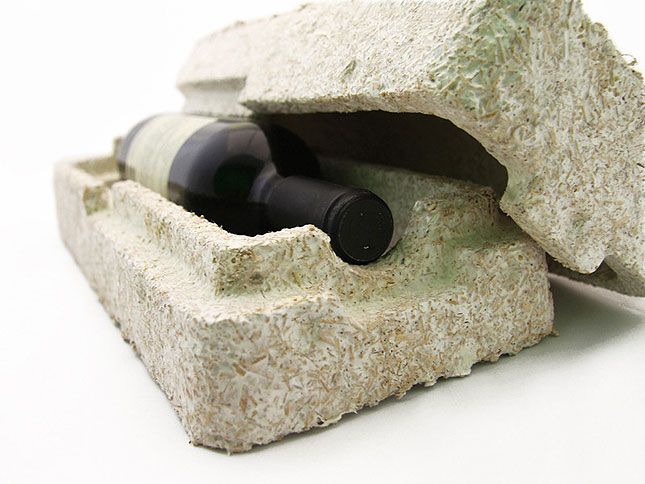Mushrooms, The New Plastic
Mushrooms can easily be viewed as natures recycling system. They have been around for billions of years and they greatly help to improve soil quality. They are effective as natures recycling system

Styrofoam cannot be recycled or disposed of. Once created, it stays on the planet for thousands of years. Styrofoam is petroleum based and contains a carcinogenic and neutroxic chemical called Benzene.
In 1986, the Environment Protection Agency National Human Adipose Tissue Survey identified styrene residues in every single sample of human fat tissue they studied, all of which were complied in 1982 within the US. This was the first time it was recognized that styrene from food and other packaging could find its way into the human body. Simply put, styrofoam is not only poisoning our environment but also our bodies due to its highly toxic nature. Eden Bayer co-founded a company called MycoBond. Recognizing the serious impact that styrofoam was having on humans and our environment, they decided to eliminate the need for the material by creating a 100% biodegradable and natural material from mushrooms.
They call this Mushroom Packaging.
Mushrooms can easily be viewed as natures recycling system. They have been around for billions of years and they greatly help to improve soil quality. Mushrooms are effective as natures recycling system because they produce enzymes that help break down compounds in plants that other vegetation is unable to produce. At the end of the day, mushrooms create a root system containing a substance called mycelium. This can be used as a glue to hold together the agricultural byproducts used in creating an alternative packaging product that is 100% bio-degradable. Since the product is alive and grows on it’s own, the energy costs are 1/10th the cost of creating styrofoam, never mind the incredible environmental savings that is taking place. Mushroom Packaging uses things we would generally see as waste like seed husks and woody biomass, and turns them into a packaging material that is insulating, protective, 100% compostable, fire, moisture and vapour resistant. If you look at the current life cycle of styrofoam, you will find that after it is made and use in packaging, the consumer unpacks their new purchase only to discard the styrofoam.
The life cycle of MycoBond’s replacement would be the same except the end user can then put the Mushroom Packaging into their environment where it will bio-degrade and create better soil conditions in their area. Mushroom Packaging is cost effective and can be made anywhere in the world. Best of all, it is ideal for the process to be done locally which would greatly reduce wasted energy in shipping costs as well. Since very little equipment is needed to make it, facilites could be set up all over the world quite simply. This may be the future of packaging.
Read the full article at the original website
References:
